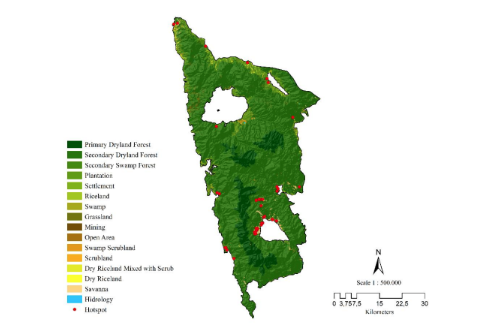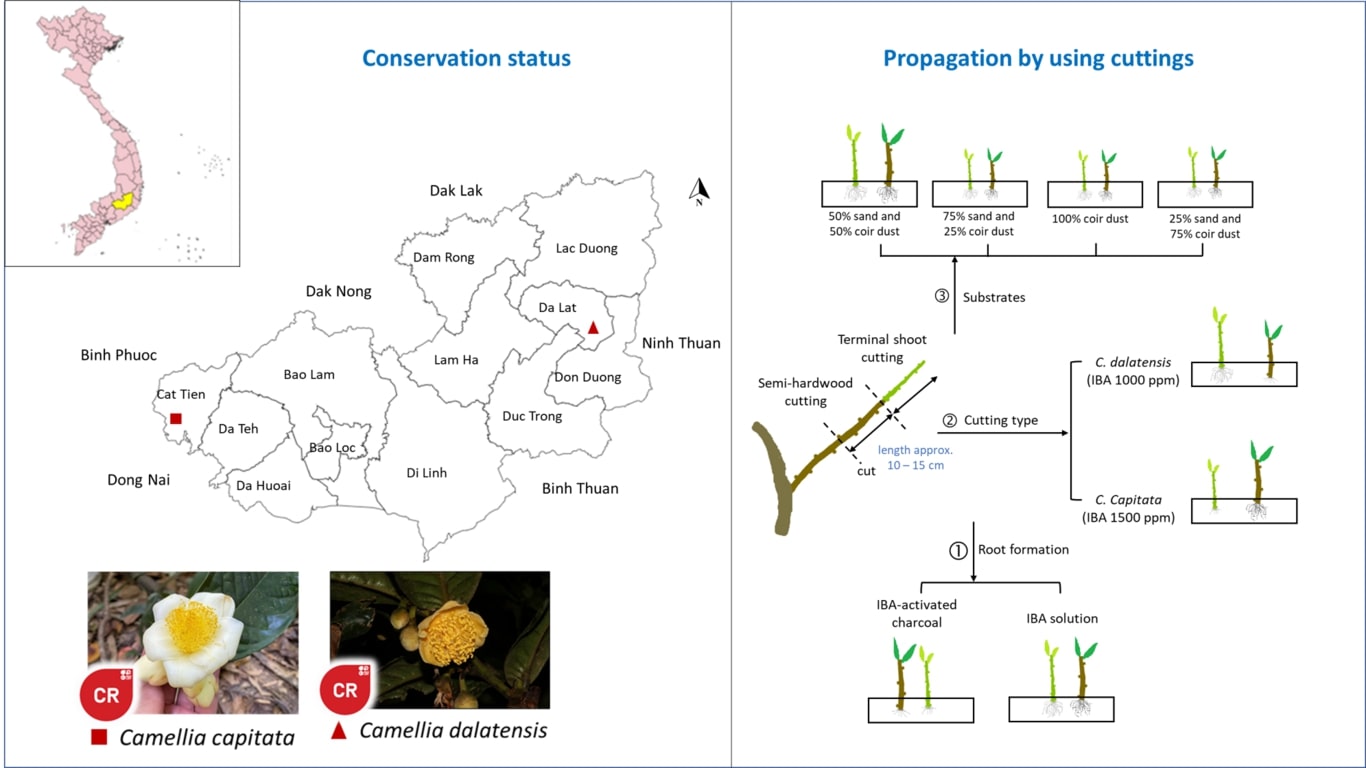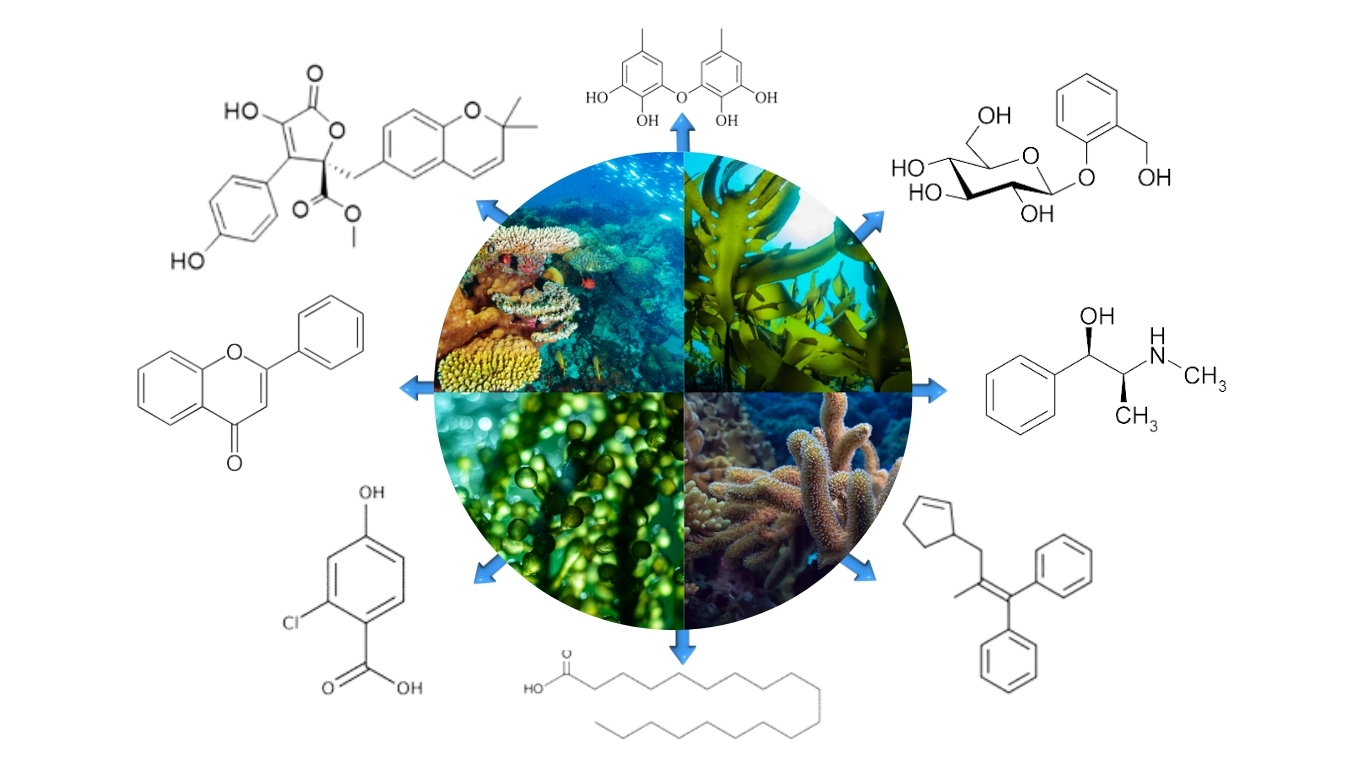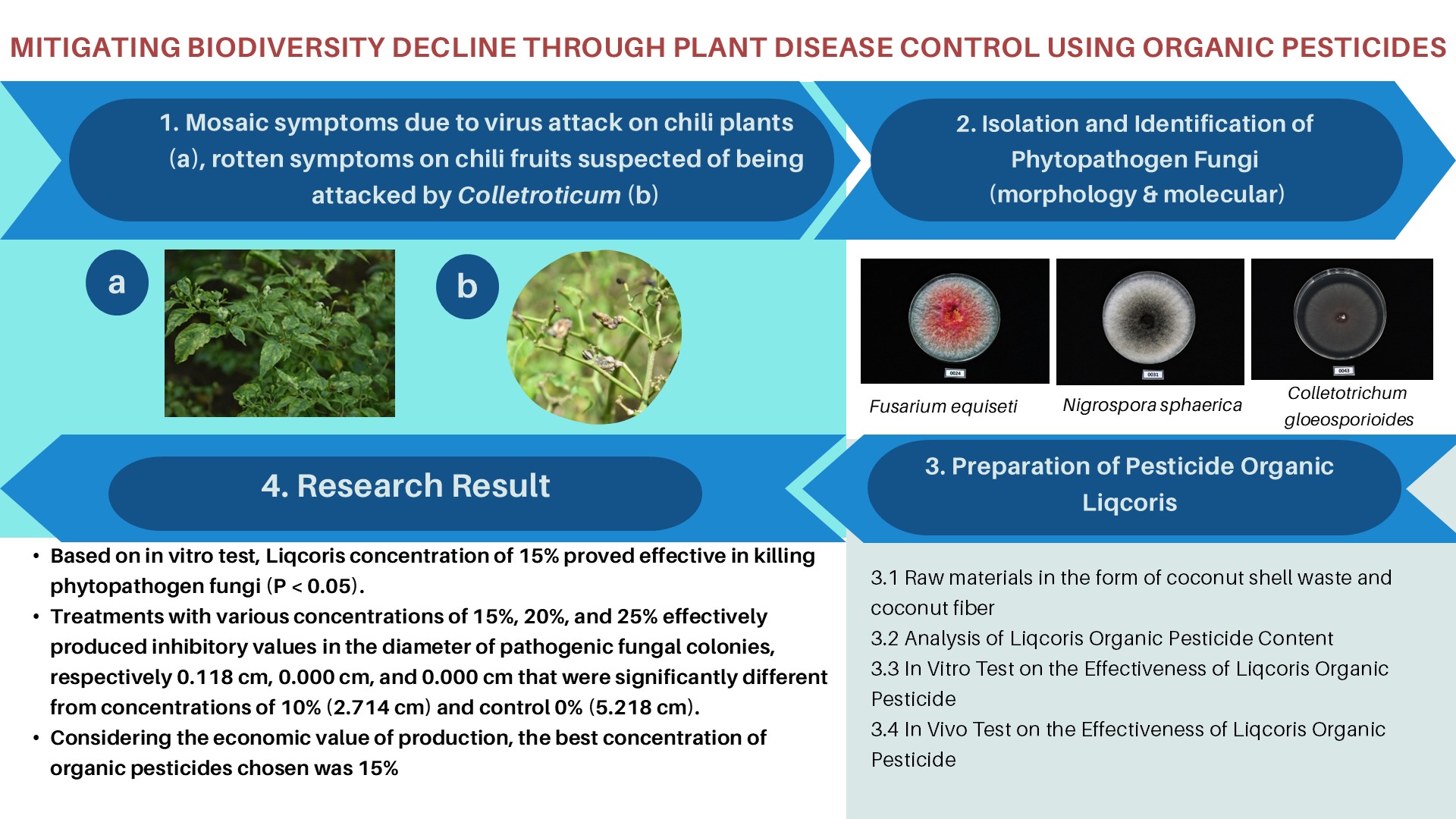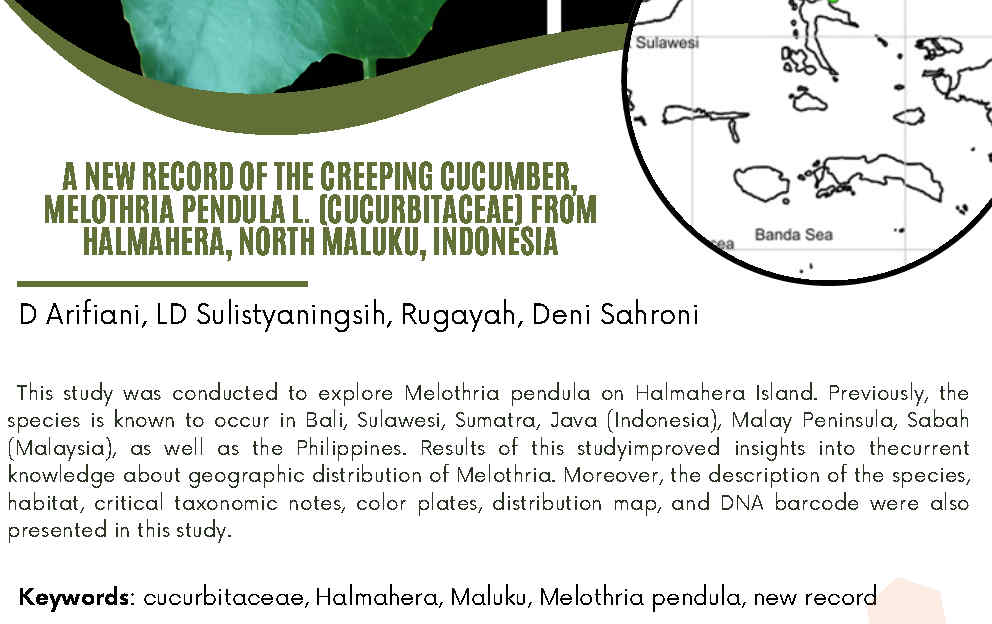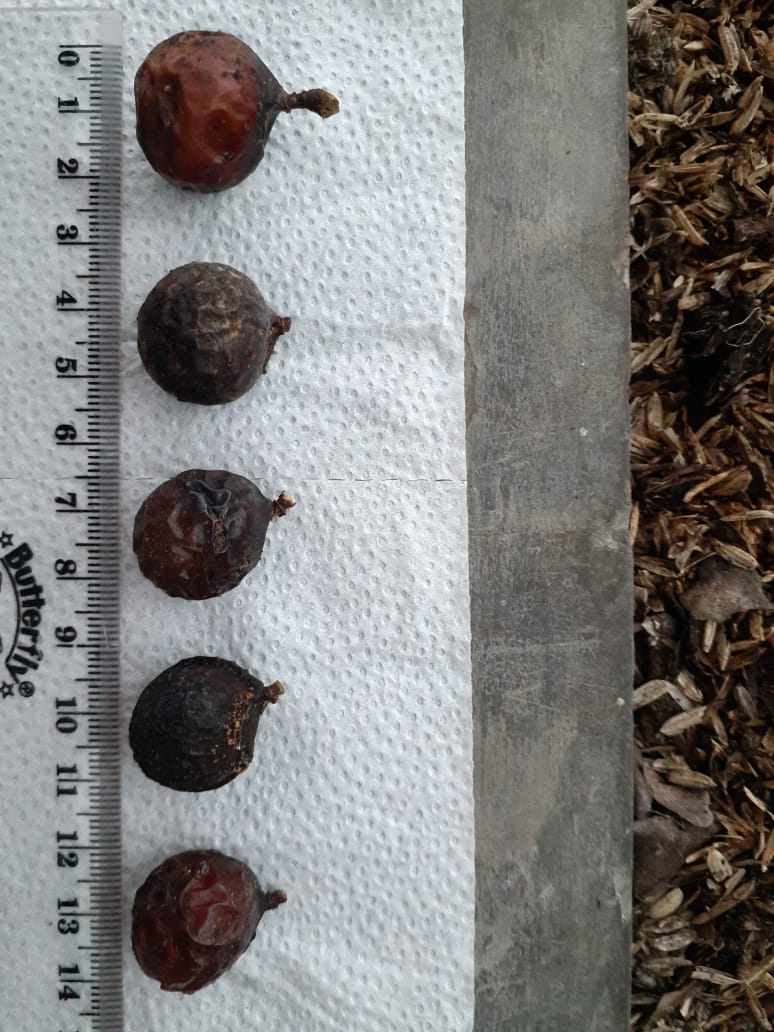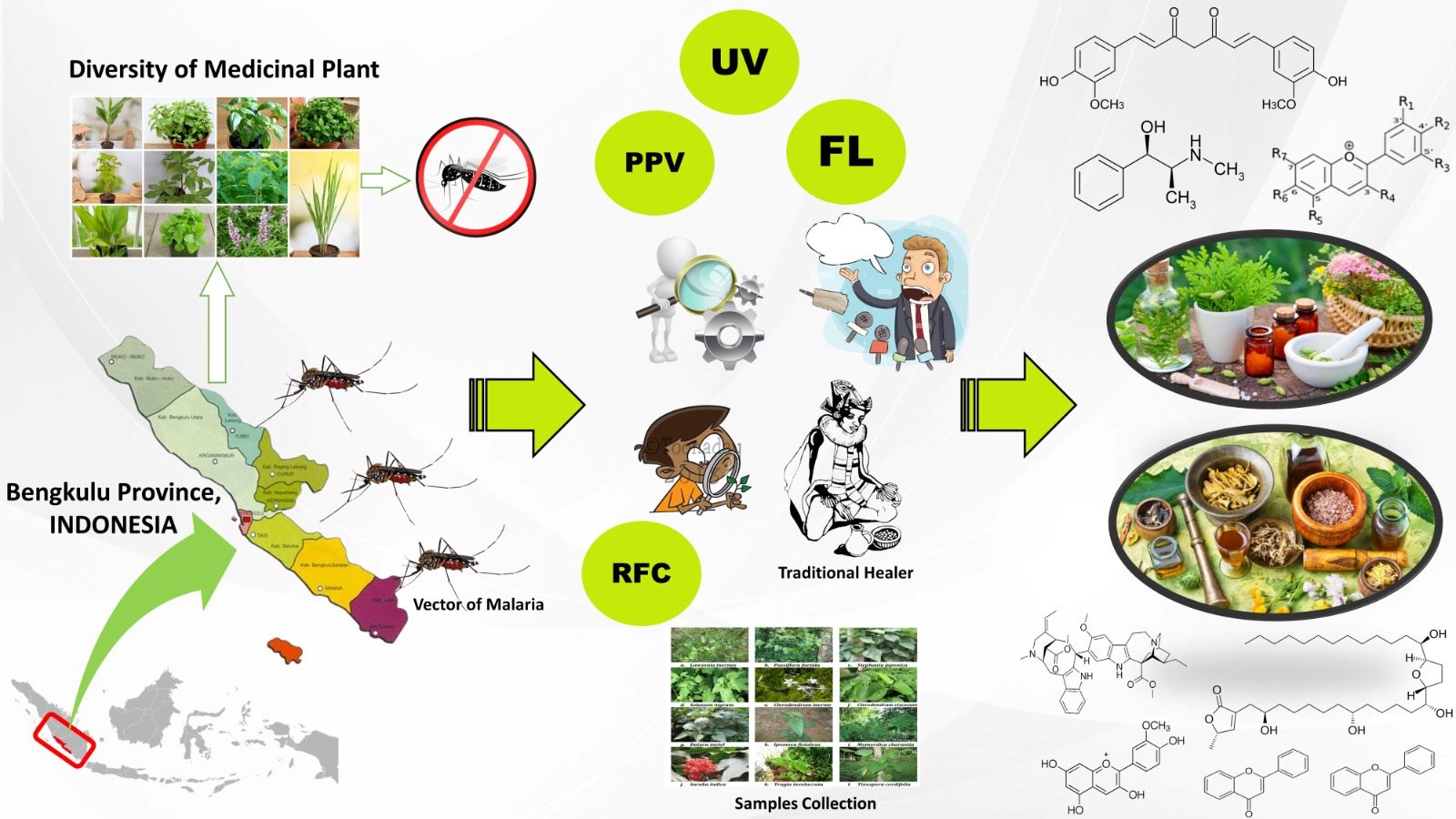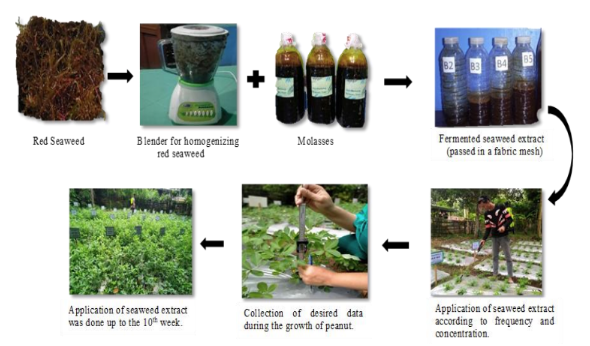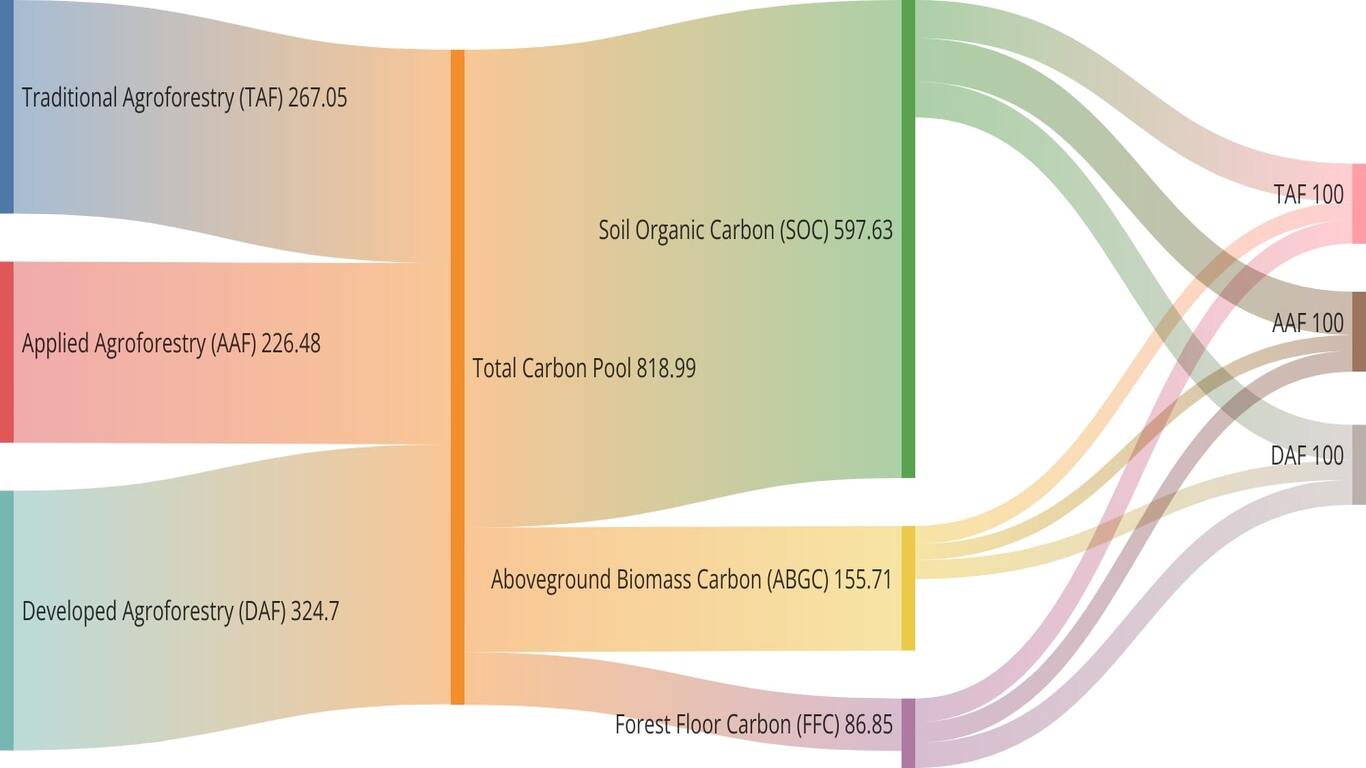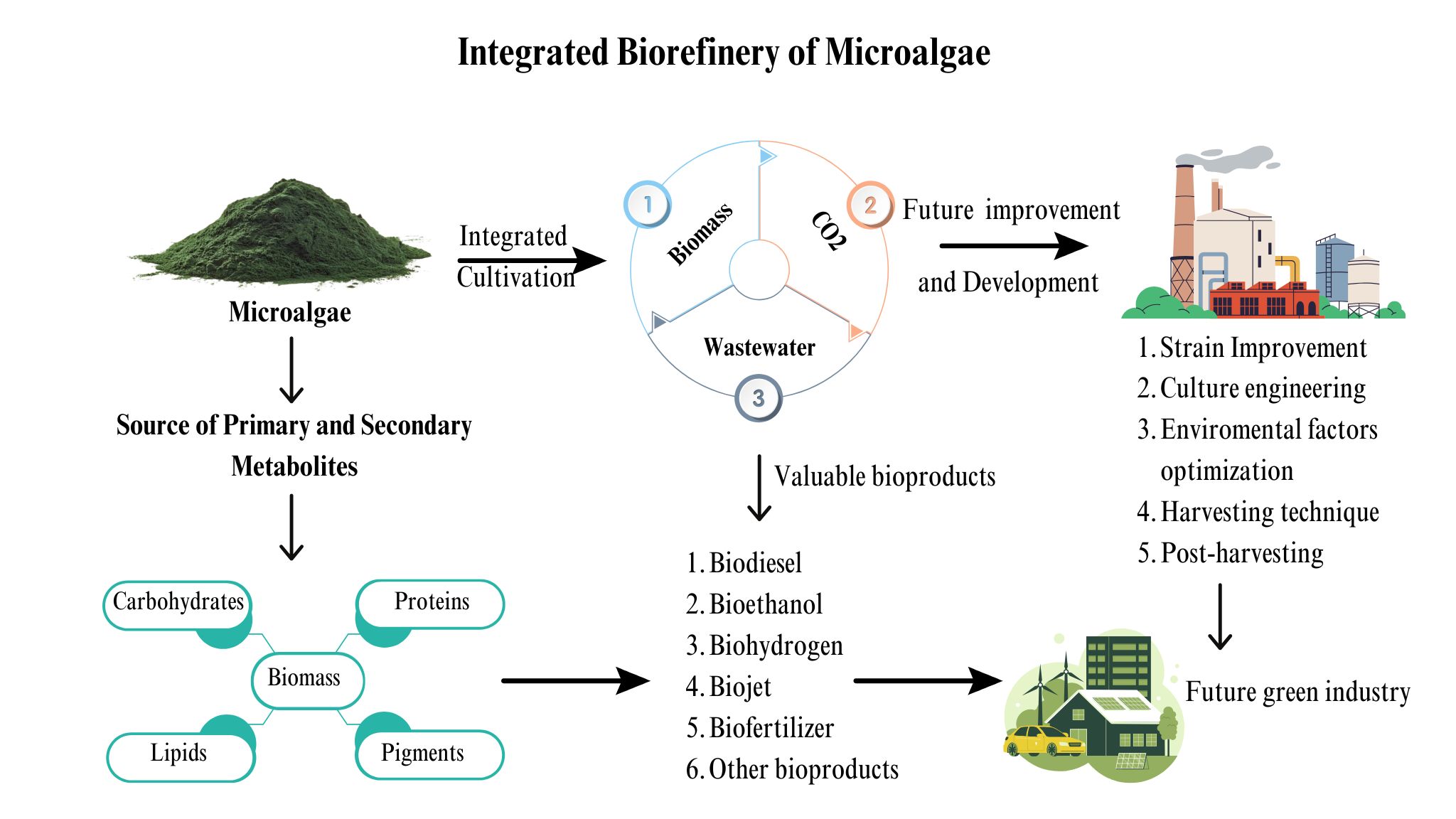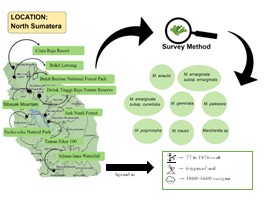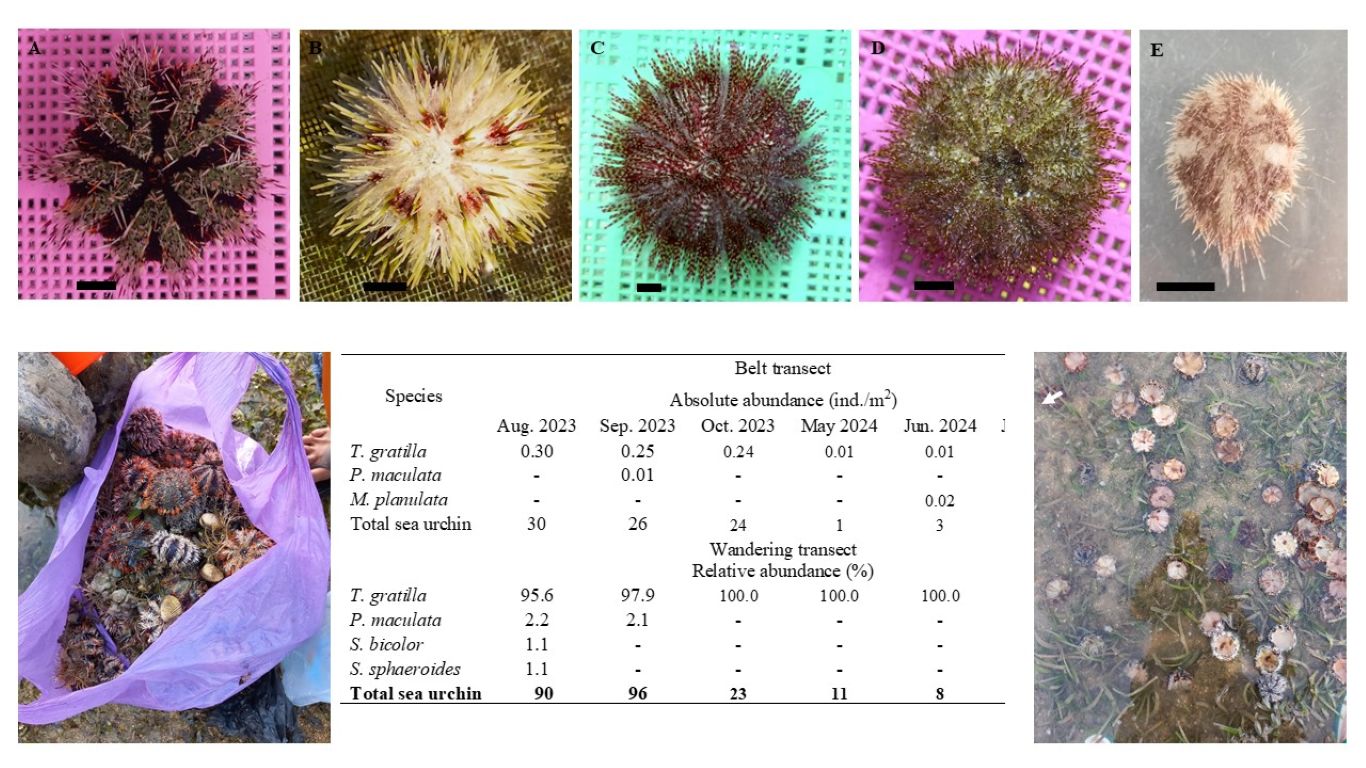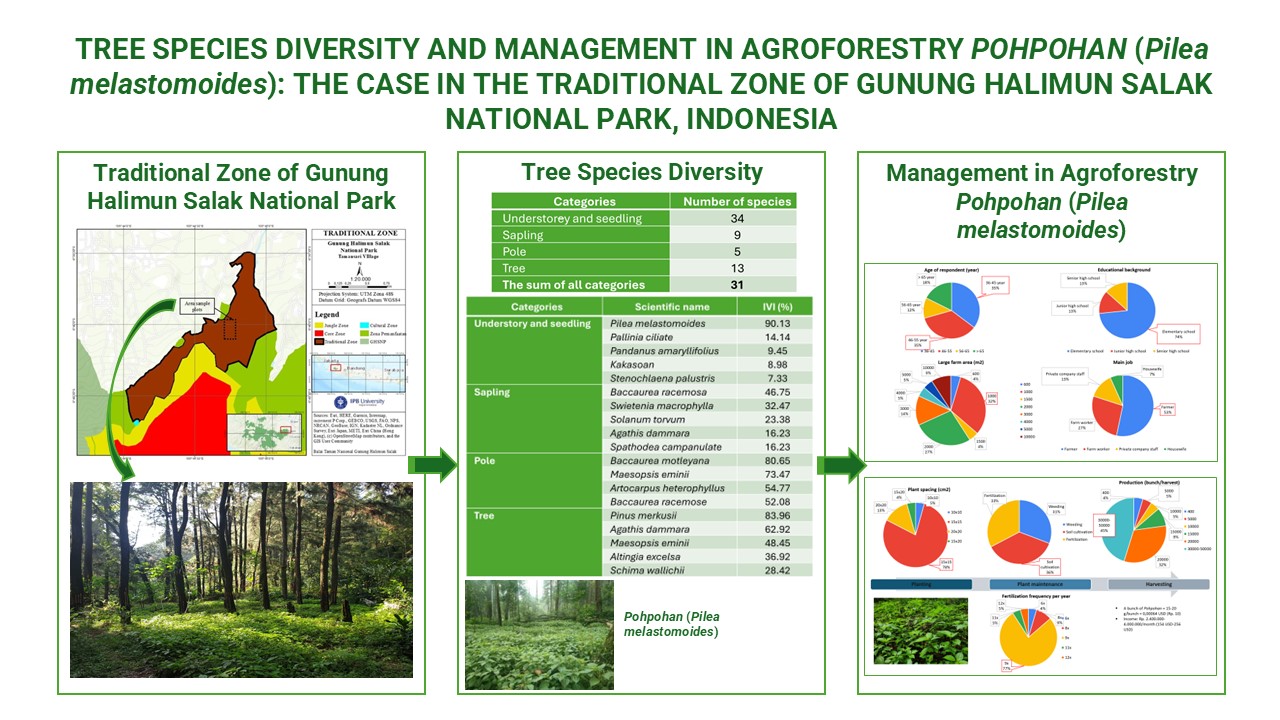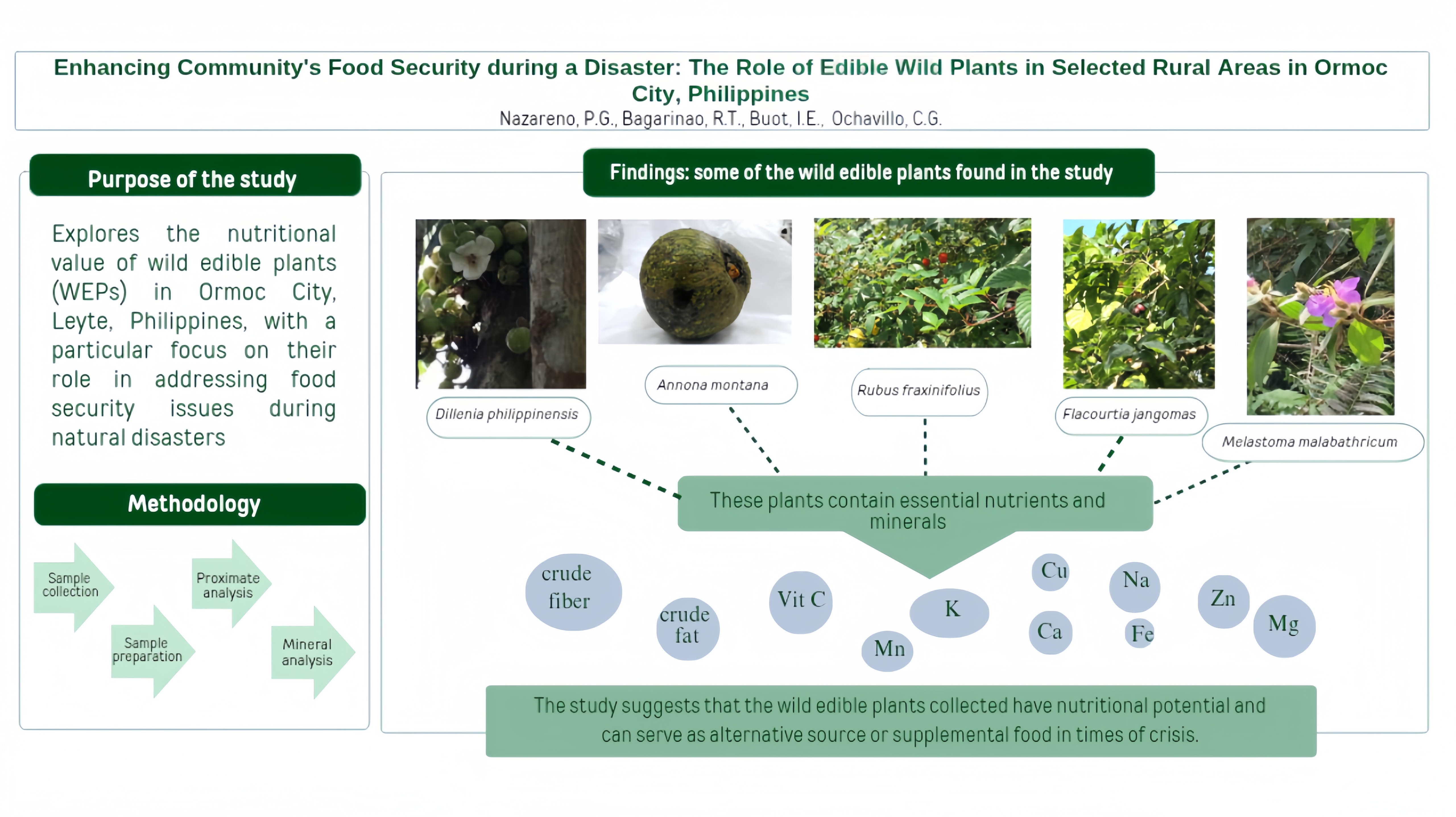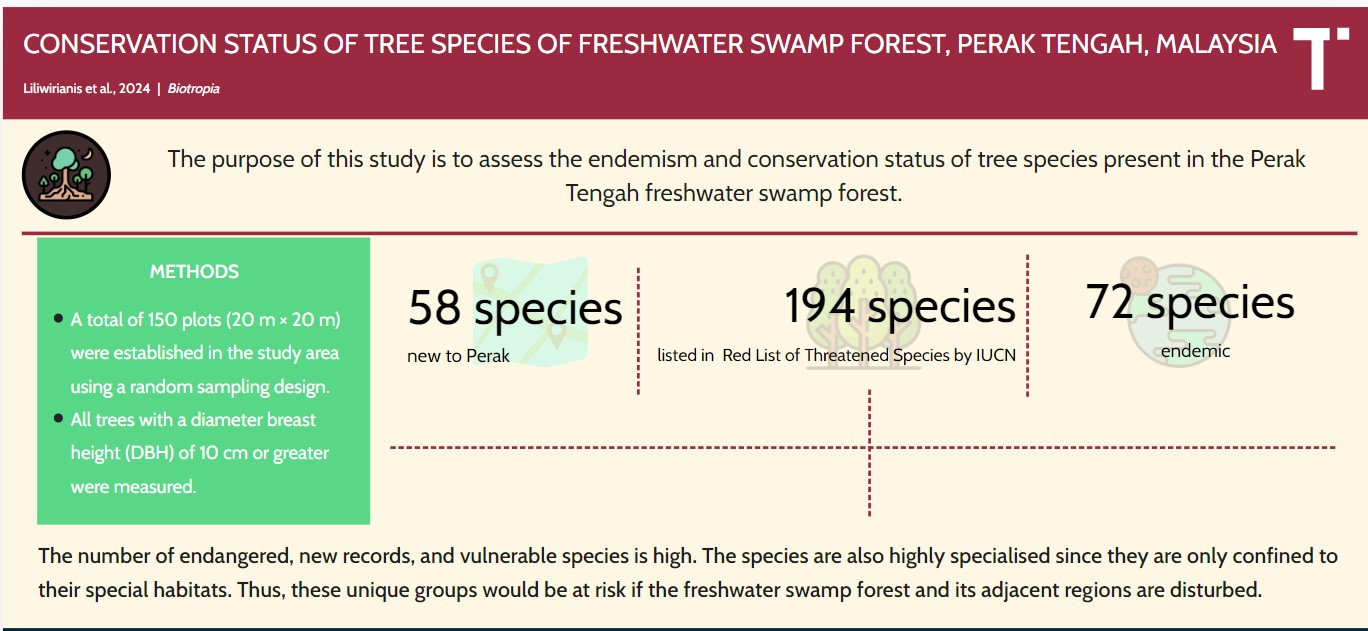EVALUATING HABITAT SUITABILITY AND ECOTOURISM POTENTIAL OF MANGROVE ECOSYSTEMS PROGO RIVER YOGYAKARTA
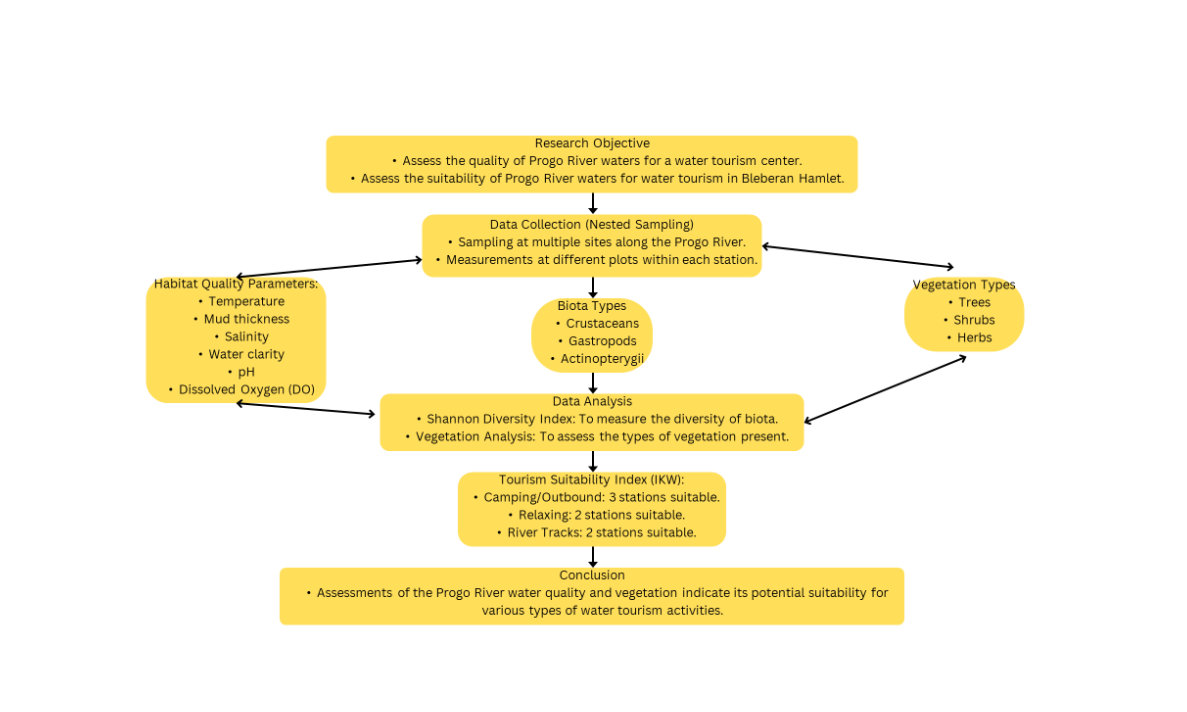
ARTICLE HIGHLIGHTS
- The article introduces an evaluation of mangrove habitat suitability for ecotourism in the Progo River area, which has not been extensively studied in this region.
- It employs nested and gridline sampling methods to measure habitat quality more comprehensively, leading to more accurate data on mangrove conditions.
- The study examines the impact of physical and chemical factors such as temperature, salinity, and dissolved oxygen on mangrove growth and biodiversity.
- It uses the Tourism Suitability Index to identify locations suitable for nature tourism activities around the Progo River.
- The article stresses the need for improved management of mangrove ecotourism areas to preserve ecosystem sustainability and support the local economy.
ABSTRACT
Mangrove forests are a transitional ecosystem located between land and sea. Habitat factors greatly influence the growth of mangrove plants. Habitat suitability is reflected in the suitability of the species that can grow in the habitat. Increased growth will ultimately increase water productivity, which can be seen from the presence of various types of biota and environmental improvements. The local community planted mangrove species (Sonneratia sp.) along the Progo River in an area of 75 h. This study aimed to: 1) assess the quality/characteristics of the Progo River waters that will be used for a water tourism center and 2) assess the suitability (IKW) of the Progo River waters for water tourism in Bleberan Hamlet. Data collection was carried out using nested sampling. Data analysis included the diversity of biota types using the Shannon Diversity Index and vegetation analysis. The results showed that the highest temperature occurred at station 3 plot 10, the highest mud thickness was observed at station 5 plot 9, the highest salinity was detected at station 3 plot 10, the highest water clarity was observed at station 2 plot 7, the highest pH was seen at station 1 plot 6 and 7, while the highest DO was spotted at station 3 plot 8. Some of the biota obtained included crustaceans, gastropods and actinopterygii. The habitat types of vegetation obtained were trees, shrubs, and some herbs. Based on the Tourism Suitability Index (IKW) value, there were 3 stations suitable for camping/outbound, 2 stations suitable for relaxing, and 2 stations suitable for river tracks.
Downloads
INTRODUCTION
Mangrove forests are important ecosystems that contribute to coastal stability which protect the coastal areas from various marine-related hazards that harm life(Gensemer et al., 2018). Many marine species rely heavily on mangrove environments, with healthy mangroves having fish populations and biodiversity that are 116 - 129% higher than degraded mangroves ((Nugraha et al., 2015)).
Mangrove ecosystem degradation causes significant issues, such as: 1) rapid degradation of mangroves, which accelerates the loss of mangrove islands and coastal areas(R & C, 2015); 2) a decrease in the diversity of flora and fauna that are specific to mangrove forests(Poedjirahajoe et al., 2017); 3) increased seawater intrusion, as the mangrove ecosystem, which serves as a buffer zone, becomes less effective due to destruction, which can lead to environmental problems, such as flooding, erosion, and salt intrusion(Hadi, 2012)(Erazo & Bowman, 2021); 4) coastal abrasion, particularly affecting communities along beaches facing straits and the sea(Sahu et al., 2015); and 5) increased flooding risks. Maintaining mangrove ecosystems can significantly reduce water flow velocity by 29 - 92% and modestly decrease wave height by 4 - 16.5 cm during cyclones, offering protection from flooding in coastal areas(Dasgupta et al., 2019).
The greatest threat to mangrove areas is the conversion of mangrove land into shrimp or fish ponds. Converting mangrove land to shrimp or fish farms impacts marine biota by increasing nutrient and carbon conversion, reducing microbial communities and metabolic diversity, and promoting nitrifying, denitrifying and sulfur-oxidizing bacteria ((Erazo & Bowman, 2021)). This conversion also resulted in the loss of 70% of the carbon stored in the mangroves and increased pressure from the exploitation of timber, fish, crustaceans and shellfish for trade(Elwin et al., 2019)(Alongi, 2002).
Additionally, there are growing conflicts arising from competing interests between different agencies and administrative regions. Ideally, the utilization of mangrove areas should take into account community needs without damaging the mangroves themselves. Furthermore, it is essential to develop activities that benefit the community, while preserving the ecological functions of the mangroves (both physico-chemical and biological). Therefore, ecotourism is an ideal solution to be implemented for the preservation of mangrove ecosystems, the development of community economies, and conservation efforts ((Azis et al., 2018)).
Banaran and Bleberan Villages are both located in Galur District, Kulon Progo Regency. The locations of these villages are potential for mangrove ecosystems because it is directly adjacent to the sea and river, but this has not been further developed(Diella et al., 2022). In addition, these two villages have a beach called Trisik Beach which is an annual stopover for rare slithers, namely green turtle (Chelonia mydas) when laying eggs. However, currently the existence and survival of green turtles (Chelonia mydas) face serious threats from the main predator, humans(Maulidah et al., 2023). Therefore, research on habitat suitability evaluation and ecotourism is important so that the preservation of mangrove forest ecosystems and the improvement of the community's economy can be realized.
The first step to realize mangrove forest ecotourism requires a systematic assessment of the land area by conducting inventory activities to assess the suitability for ecotourism(Noor et al., 1999). This study aimed to identify: 1) the characteristics of aquatic ecosystem habitats including: types of aquatic biota, types and density of existing vegetation, and other environmental factors, such as salinity, temperature, pH and muddiness and 2) the suitability of habitat characteristics for ecotourism.
MATERIALS AND METHODS
This research was conducted in the mangrove area in Bleberan Hamlet, Banaran Village, Galur District, Kulonprogo Regency. Geographically, the Banaran Village is located between 110°11’ - 110°14’ E and 7°57’ - 7°59’ S. The observation and sampling sites were determined, as presented in Figures 1-7.
Figure 1.Study area in the Banaran Village of Progo River
| Image Figure 2 Bridge view (Observation Spot 1) | Image Figure 3 River view (Observation Spot 2) |
| Image Figure 4 Estuarine view (Observation Spot 3) | Image Figure 5 Near village (Observation Spot 4) |
| Image Figure 6 Fishing pool (Observation Spot 5) | Image Figure 7 River island (Observation Spot 6) |
This study applied the combination methods, i.e., the path and gridline methods(Hrycik et al., 2017). The path was laid as a perpendicular along the coastline to find out the vegetation condition changes. The path method was implemented based on Poedjirahajoe et al. (2017)(Poedjirahajoe et al., 2017)as follows.
Figure 8.Path method design in coastal ecosystems (Poedjirahajoe et al. 2017)
Observation spot (PU) were applied in each zone using nested plot sampling (Figure 14) with a total of 12 nested plots at each observation spot. The vegetation measured is the vegetation located in the observation spot. The criteria for mangrove growth levels are based on the Decree of the Directorate General of Forestry No. 60/KPTS/DI/1978 concerning Guidelines for the Brackish Water Forest Silviculture System, namely:
- Seedlings, plants less than 1.5 m high (plot size 2 x 2 m).
- Saplings, plants more than 1.5 m high and less than 10 cm in diameter (plot size 5 x 5 m).
- Trees, plants more than 10 cm in diameter (plot size 10 x 10 m).
Figure 9.Nested sampling pattern
Measurement of the physical and chemical quality of the habitat was also carried out at each observation spot, including measurements of
[Dirjen PHKA] Directorate of Nature Tourism and Utilization of Environmental Services. 2003. Pedoman Analisis Daerah Operasi Objek dan Daya Tarik Wisata Alam (ADO-ODTWA) [Guidelines for Analysis of Natural Tourism Objects and Attractions Operation Areas (ADO-ODTWA)]. Bogor. Directorate General of Forest Protection and Nature Conservation.
Affressia R, Poedjirahajoe E, & Hasanbahri S. 2017. Karakteristik habitat mangrove di sekitar pertambangan timah lepas pantai Kabupaten Bangka Selatan [Characteristics of mangrove habitat around offshore tin mining in South Bangka Regency]. Jurnal Manusia dan Lingkungan, 24(3), 131-140. https://doi.org/10.22146/jml.22997. DOI: https://doi.org/10.22146/jml.22997
Alongi D. 2002. Present state and future of the world's mangrove forests. Environmental Conservation, 29, 331 - 349. https://doi.org/10.1017/S0376892902000231. DOI: https://doi.org/10.1017/S0376892902000231
Asp N, Gomes V, Ogston A, Borges J, & Nittrouer C. 2016. Sediment source, turbidity maximum, and implications for mud exchange between channel and mangroves in an Amazonian estuary. Ocean Dynamics, 66, 285-297. https://doi.org/10.1007/s10236-015-0910-2. DOI: https://doi.org/10.1007/s10236-015-0910-2
Azis S, Sipan I, Sapri M, & Zafirah A. 2018. Creating an innocuous mangrove ecosystem: Understanding the influence of ecotourism products from Malaysian and international perspectives. Ocean & Coastal Management. https://doi.org/10.1016/J.OCECOAMAN.2018.09.014. DOI: https://doi.org/10.1016/j.ocecoaman.2018.09.014
Ball MC, and Sobrado MA. 2002. Ecophysiology of mangroves: challenges in linking physiological processes with patterns in forest structure. Pages 331–346 in M. C. Press, J. D. Scholes and M. G. Barker, editors. Advances in plant physiological ecology. Blackwell Science, Oxford, UK.
Boulesteix K, Poyatos‐Moré M, Flint S, Taylor K, Hodgson D, & Hasiotis S. 2019. Transport and deposition of mud in deep‐water environments: Processes and stratigraphic implications. Sedimentology, 66. https://doi.org/10.1111/sed.12614. DOI: https://doi.org/10.1111/sed.12614
Breaux N, Lebreton B, Palmer T, Guillou G, & Pollack J. 2019. Ecosystem resilience following salinity change in a hypersaline estuary. Estuarine, Coastal and Shelf Science. https://doi.org/10.1016/J.ECSS.2019.106258. DOI: https://doi.org/10.1016/j.ecss.2019.106258
Clough BF. 2013. Primary productivity and growth of mangrove forests. Pages 225–249 in A. I. Robertson and D. M. Alongi, editors. Tropical mangrove ecosystems. American Geophysical Union, Washington, D.C., USA. DOI: https://doi.org/10.1029/CE041p0225
Dasgupta S, Islam M, Huq M, Khan Z, & Hasib M. 2019. Quantifying the protective capacity of mangroves from storm surges in coastal Bangladesh. PLoS ONE, 14. https://doi.org/10.1371/journal.pone.0214079. DOI: https://doi.org/10.1371/journal.pone.0214079
Diella AL, Notarianus KA, Erlangga Y, Santoso SN, Saragih JRM, Utami F, & Paramita BL. 2022. Pengembangan Kawasan Wisata Edukasi Mangrove pada Era New Normal di Desa Banaran, Galur, Kulon Progo [Development of Mangrove Educational Tourism Area in the New Normal Era in Banaran Village, Galur, Kulon Progo]. Jurnal Atma Inovasia (JAI), 2(5), 511-517. DOI: https://doi.org/10.24002/jai.v2i5.5181
Diggelen A, & Montagna P. 2016. Is Salinity Variability a Benthic Disturbance in Estuaries?. Estuaries and Coasts, 39, 967-980. https://doi.org/10.1007/s12237-015-0058-9. DOI: https://doi.org/10.1007/s12237-015-0058-9
Eddy S, Iskandar II, Ridho MR, & Mulyana A. 2019. Restorasi hutan mangrove terdegradasi berbasis masyarakat lokal [Community-based restoration of degraded mangrove forests]. Indobiosains. 1(1), 1-13. https://doi.org/10.31851/indobiosains.v1i1.2298.
Ekau W, Auel H, Pörtner H, & Gilbert D. 2009. Impacts of hypoxia on the structure and processes in pelagic communities (zooplankton, macro-invertebrates and fish). Biogeosciences, 7, 1669-1699. https://doi.org/10.5194/BG-7-1669-2010. DOI: https://doi.org/10.5194/bg-7-1669-2010
Elwin A, Bukoski J, Jintana V, Robinson E, & Clark J. 2019. Preservation and recovery of mangrove ecosystem carbon stocks in abandoned shrimp ponds. Scientific Reports, 9. https://doi.org/10.1038/s41598-019-54893-6. DOI: https://doi.org/10.1038/s41598-019-54893-6
Field C. 2004. Impact of expected climate change on mangroves. Hydrobiologia, 295, 75-81. https://doi.org/10.1007/BF00029113. DOI: https://doi.org/10.1007/BF00029113
Gensemer RW, Gondek JC, Rodriquez PH, Arbildua JJ, Stubblefield WA, Cardwell AS, Santore RC, Ryan AC, Adams WJ, and Nordheim E. 2018. Evaluating the effects of pH, hardness, and dissolved organic carbon on the toxicity of aluminum to freshwater aquatic organisms under circumneutral conditions, Environmental Toxicology and Chemistry 37(1): 49–60. https://doi.org/10.1002/etc.3920. DOI: https://doi.org/10.1002/etc.3920
Hadi BS. 2012. Aplikasi citra resolusi tinggi untuk penilaian kondisi mangrove di beberapa negara [Application of high resolution imagery for mangrove condition assessment in several countries]. Geo Media: Majalah Ilmiah dan Informasi Kegeografian, 10(1), 129-138.
Hilmi E, Kusmana C, Suhendang E, & Iskandar I. 2017. Correlation Analysis Between Seawater Intrusion and Mangrove Greenbelt. Indonesian Journal of Forestry Research, 4, 151-168. https://doi.org/10.20886/ijfr.2017.4.2.151-168. DOI: https://doi.org/10.20886/ijfr.2017.4.2.151-168
Hrycik A, Almeida L, & Höök T. 2017. Sub‐lethal effects on fish provide insight into a biologically‐relevant threshold of hypoxia. Oikos, 126, 307-317. https://doi.org/10.1111/OIK.03678. DOI: https://doi.org/10.1111/oik.03678
Indriyanto. 2019. Ekologi Hutan [Forest Ecology]. Bumi Aksara. Jakarta.
Kathiresan K & Bingham BL. 2001. Biology of mangroves and mangrove ecosystems. Advances in Marine Biology 40, 81-251. https://doi.org/10.1016/S0065-2881(01)40003-4. DOI: https://doi.org/10.1016/S0065-2881(01)40003-4
Liu F, Wang Z, Wu B, Bjerg J, Hu W, Guo X, Guo J, Nielsen L, Qiu R, & Xu M. 2021. Cable bacteria extend the impacts of elevated dissolved oxygen into anoxic sediments. The ISME Journal, 15, 1551 - 1563. https://doi.org/10.1038/s41396-020-00869-8. DOI: https://doi.org/10.1038/s41396-020-00869-8
Maulidah FZ, Iskandar J, & Gunawan B. 2023. The Tangible and Intangible Benefits of Mangrove Forests as a Factor Affecting Community Participation in Mangrove Management. Journal of Tropical Ethnobiology. https://doi.org/10.46359/jte.v6i2.174. DOI: https://doi.org/10.46359/jte.v6i2.174
Mayastuti A, Sari DAA, & Astirin OP. 2024. Pemberdayaan Masyarakat Desa Banaran Kecamatan Galur Kabupaten Kulon Progo Melalui Pendekatan Pariwisata Berbasis Lingkungan (Ecotourism) [Empowerment of Banaran Village Community, Galur District, Kulon Progo Regency Through Environmentally Based Tourism Approach (Ecotourism)]. Journal of Law, Society, and Islamic Civilization, 5(2), 135-156.
Muhsoni F. 2020. Karakteristik Kondisi Mangrove di Desa Taddan Kabupaten Sampang [Characteristics of Mangrove Conditions in Taddan Village, Sampang Regency]. Rekayasa. 13(3), 263-270. https://doi.org/10.21107/REKAYASA.V13I3.9146. DOI: https://doi.org/10.21107/rekayasa.v13i3.9146
Neupane S, Vogel J, Storm D, Barfield B, & Mittelstet A. 2015. Development of a Turbidity Prediction Methodology for Runoff–Erosion Models. Water, Air, & Soil Pollution, 226, 1-14. https://doi.org/10.1007/s11270-015-2679-9. DOI: https://doi.org/10.1007/s11270-015-2679-9
Noor YR, Khazali M, Suryadiputra INN. 1999. Panduan Pengenalan Mangrove di Indonesia [Introduction Guide to Mangroves in Indonesia]. PHKA/WA-IP, Bogor [Indonesian].
Nugraha B, Banuwa IS, & Widagdo S. 2015. Perencanaan lanskap ekowisata hutan mangrove di pantai sari ringgung desa sidodadi kecamatan padang cermin kabupaten pesawaran [Ecotourism landscape planning for mangrove forests on Sari Ringgung Beach, Sidodadi Village, Padang Cermin District, Pesawaran Regency]. Jurnal Sylva Lestari, 3(2), 53-66. DOI: https://doi.org/10.23960/jsl2353-66
Onrizal O, Desrita, Ahmad AG, & Thoha A. 2020. The Correlation Between Mangroves and Coastal Aquatic Biota. Journal of Physics: Conference Series, 1542. https://doi.org/10.1088/1742-6596/1542/1/012064. DOI: https://doi.org/10.1088/1742-6596/1542/1/012064
Poedjirahajoe E & Matatula J. 2019. The Physiochemical Condition of Mangrove Ecosystems in The Coastal District of Sulamo, Kupang, East Nusa Tenggara, Indonesia. Journal Manajemen Hutan Tropika. 25(3), 173-184. https://doi.org/10.7226/jtfm.25.3.173. DOI: https://doi.org/10.7226/jtfm.25.3.173
Poedjirahajoe E, Marsono D, & Wardhani FK. 2017. Penggunaan Principal Component Analysis dalam Distribusi Spasial Vegetasi Mangrove di Pantai Utara Pemalang Jawa Tengah [The Use of Principal Component Analysis in Spatial Distribution of Mangrove Vegetation on the North Coast of Pemalang, Central Java]. Jurnal Ilmu Kehutanan. 11, 29-42. https://doi.org/10.22146/jik.24885. DOI: https://doi.org/10.22146/jik.24885
Polidoro B, Carpenter K, Collins L, Duke N, Ellison A, Ellison J, Farnsworth E, Fernando E, Kathiresan K, Koedam N, Livingstone S, Miyagi T, Moore G, Nam V, Ong J, Primavera J, Salmo S, Sanciangco J, Sukardjo S, Wang Y, & Yong J. 2010. The Loss of Species: Mangrove Extinction Risk and Geographic Areas of Global Concern. PLoS ONE, 5. https://doi.org/10.1371/journal.pone.0010095. DOI: https://doi.org/10.1371/journal.pone.0010095
Rahman M, Sass-Klaassen U, Zuidema P, Chowdhury M, & Beeckman H. 2020. Salinity drives growth dynamics of the mangrove tree Sonneratia apetala Buch. -Ham. in the Sundarbans, Bangladesh. Dendrochronologia, 62, 125711. https://doi.org/10.1016/j.dendro.2020.125711. DOI: https://doi.org/10.1016/j.dendro.2020.125711
Reef R & Lovelock C. 2015. Regulation of water balance in mangroves. Annals of botany, 115(3), 385-95 . https://doi.org/10.1093/aob/mcu174. DOI: https://doi.org/10.1093/aob/mcu174
Ryan P. 1991. Environmental effects of sediment on New Zealand streams: A review. New Zealand Journal of Marine and Freshwater Research, 25, 207-221. https://doi.org/10.1080/00288330.1991.9516472. DOI: https://doi.org/10.1080/00288330.1991.9516472
Sahu SC, Suresh HS, Murthy IK, Ravindranath NH. 2015. Mangrove Area Assessment in India: Implications of Loss of Mangroves. J Earth Sci Clim Change 6: 280. doi:10.4172/2157-7617.1000280. DOI: https://doi.org/10.4172/2157-7617.1000280
Smith TJIII, and Duke NC. 1987. Physical determinants of inter-estuary variation in mangrove species richness around the tropical coastline of Australia. Journal of Biogeography 14(1), 9–19. https://doi.org/10.2307/2844783. DOI: https://doi.org/10.2307/2844783
Whidayanti E, Handayani T, Supriatna, & Manessa MDM. 2021. A spatial study of mangrove ecosystems for abrasion prevention using remote sensing technology in the coastal area of Pandeglang Regency. IOP Conference Series: Earth and Environmental Science, 771. https://doi.org/10.1088/1755-1315/771/1/012014. DOI: https://doi.org/10.1088/1755-1315/771/1/012014
Yulianda F. 2019. Ekowisata perairan: suatu konsep kesesuaian dan daya dukung wisata bahari dan wisata air tawar (cet. 1) [Marine ecotourism: a concept of suitability and carrying capacity of marine and freshwater tourism (1st ed.)]. Bogor: IPB Press.
Copyright (c) 2025 Erny Poedjirahajoe, Muhammad Reza Pahlevi, Frita Kusuma Wardhani, Ryan Adi Satria, Dimas Cahya Kurnia Saputra

This work is licensed under a Creative Commons Attribution-NonCommercial-NoDerivatives 4.0 International License.
Authors who publish with this journal agree with the following terms:
- Authors retain copyright and grant the journal right of first publication, with the work 1 year after publication simultaneously licensed under a Creative Commons attribution-noncommerical-noderivates 4.0 International License that allows others to share, copy and redistribute the work in any medium or format, but only where the use is for non-commercial purposes and an acknowledgement of the work's authorship and initial publication in this journal is mentioned.
- Authors are able to enter into separate, additional contractual arrangements for the non-exclusive distribution of the journal's published version of the work (e.g., post it to an institutional repository or publish it in a book), with an acknowledgement of its initial publication in this journal.
- Authors are permitted and encouraged to post their work online (e.g., in institutional repositories or on their website) prior to and during the submission process, as it can lead to productive exchanges, as well as earlier and greater citation of published work (See The Effect of Open Access).









